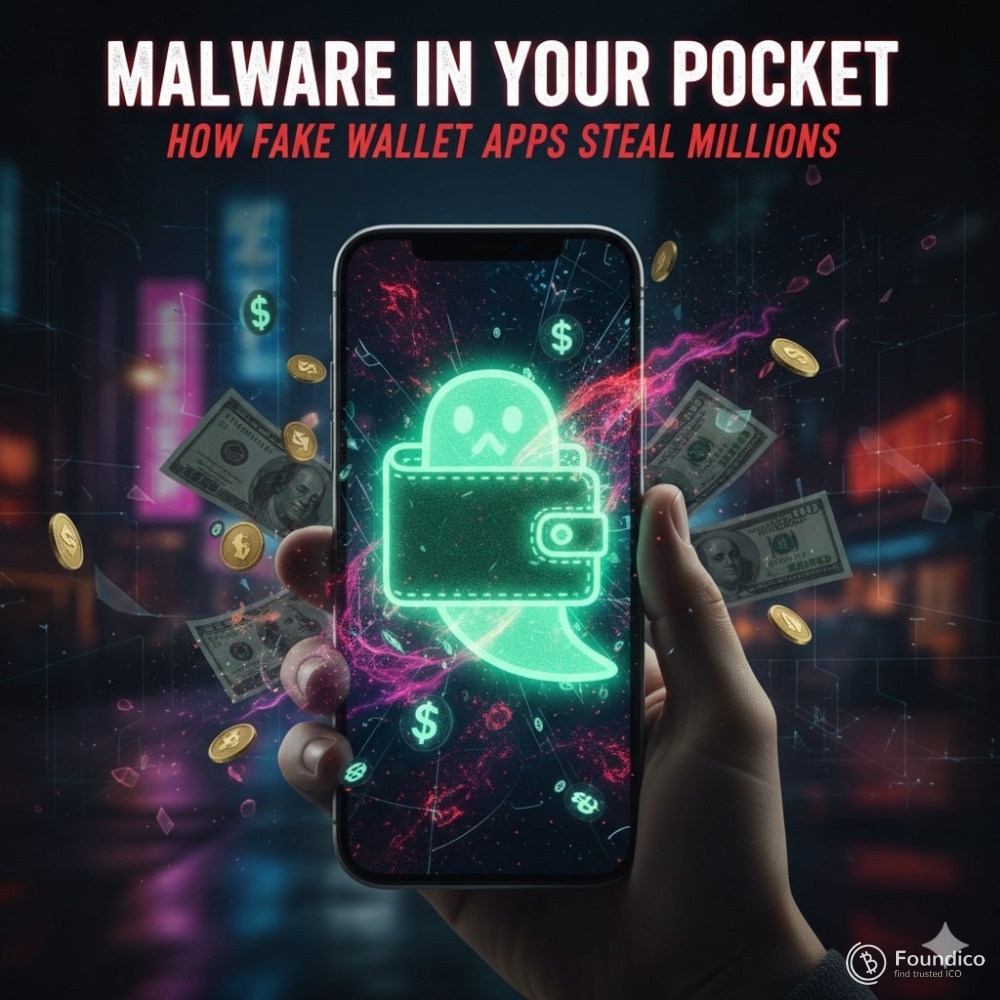Malware in Your Pocket: How Fake Wallet Apps Steal Millions

By Dr. Pooyan Ghamari, Swiss Economist and Visionary
The Invisible Epidemic of Fake Crypto Apps
Every week, app stores purge dozens of counterfeit cryptocurrency wallets that have already siphoned millions from unsuspecting users. These clones mimic legitimate interfaces down to the pixel, slipping past review filters with polished screenshots and fabricated reviews. Once installed, they quietly harvest seed phrases, private keys, or reroute transactions to attacker-controlled addresses.
Anatomy of a Wallet Impersonator
Fake apps arrive through multiple vectors. Search-term poisoning ranks apps with names like “MetaMaskk” or “TrustWallet Pro” above genuine entries. Paid promotions and affiliate links flood social media, promising exclusive features or higher yields. On Android, sideloading via phishing sites bypasses Google Play entirely. iOS counterfeits exploit enterprise certificates or TestFlight abuse before Apple revokes them.
Seed Phrase Interception Techniques
The simplest theft occurs at setup. Victims enter recovery phrases into forms that transmit plaintext to remote servers. More sophisticated variants overlay legitimate apps with transparent screens, capturing keystrokes only when the seed field appears. Some delay extraction for weeks, waiting until substantial balances accumulate.
Address Substitution in Real Time
Clipboard managers built into malware monitor copied text. The moment a legitimate receive address hits the clipboard, it swaps in an attacker-owned substitute with matching prefixes and suffixes—undetectable during casual glances. QR code scanners embedded in fake apps perform the same swap when users scan invoices.
Permission Creep and Background Drains
Excessive permissions provide cover. Accessibility services read every screen; notification listeners intercept two-factor codes. Background services poll wallet balances via RPC calls, triggering automatic sweeps once thresholds are met. Battery optimization whitelists keep the app alive even when users think it’s closed.
The Review Manipulation Machine
Armies of bot accounts flood stores with five-star ratings within hours of launch. Templates rotate praise—“fast sync,” “great UI”—while negative reports are drowned or flagged as spam. Developers cycle package names weekly, re-uploading under new identities before takedowns propagate.
Case Study: The Phantom Yield Farm Drain
A wallet promising 400 % staking returns appeared in late-night Telegram ads. Users connected existing wallets via “import” functions that requested full signing rights. Within 72 hours, 2 400 ETH vanished through incremental approvals disguised as gas refunds. The app vanished from stores, leaving only a defunct domain.
Detection Red Flags Before Installation
Verify developer names against official websites; typos or extra characters are instant warnings. Check download counts—legitimate wallets rarely launch with millions overnight. Examine privacy policies; vague statements about “analytics partners” mask data sales. On Android, use tools like Exodus or AppBrain to reveal hidden permissions post-install.
Safe Installation Protocols
Download only from direct links on verified project pages or hardware wallet manufacturers. Enable Google Play Protect and iOS app verification. Scan APK hashes against community databases before sideloading. After install, immediately disable accessibility services and overlay permissions unless explicitly required.
Recovery Is Rarely an Option
Once keys are exposed, funds move within minutes through mixing services. Exchange freezes help only if destination addresses are known and cooperative. Insurance covers fiat platforms, not self-custody mistakes. The only reliable defense is prevention.
Industry and Regulator Countermeasures
App stores now deploy machine-learning classifiers trained on bytecode patterns of known drainers. Certificate transparency logs expose rogue enterprise signatures. Yet attackers adapt faster than policies, underscoring user vigilance as the last line.
A single tap installs trust; a single breach empties lifetimes of savings. Fake wallet apps prove that in crypto, the most dangerous malware fits neatly in your pocket.

 BitcoinHyper - Bitcoin Hyper finally unlocks fast and cheap Bitcoin transactions by delivering the first ever Bitcoin Layer 2 blockchain.
BitcoinHyper - Bitcoin Hyper finally unlocks fast and cheap Bitcoin transactions by delivering the first ever Bitcoin Layer 2 blockchain.